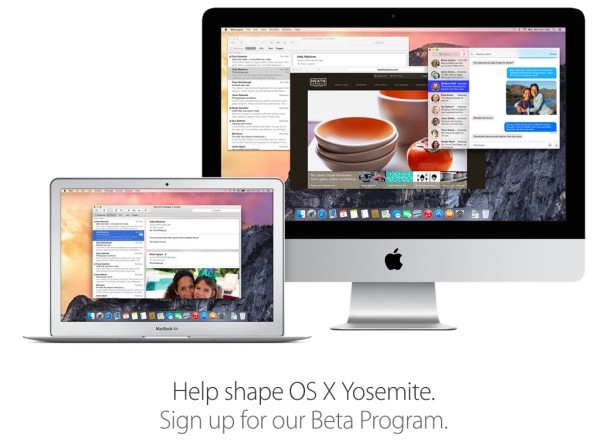OS X Yosemite Public Beta Release is Tomorrow, Here’s How to Prepare

Tomorrow, Apple will release the first Public Beta version of OS X Yosemite to Mac users who have registered with the open beta program. The first public beta build of OS X 10.10 will apparently be the same as Yosemite Developer Preview 4, and is aimed at soliciting feedback from non-developer Mac users, according to ReCode.
It should be emphasized that OS X Yosemite Beta releases are just that, beta, meaning they are buggy, incomplete, and offer an experience that is less reliable than a final public version of an operating system. This is certainly not for everyone, particularly on a production machine where stability is a requirement. Nonetheless, many curious Mac users will probably be interested in running the public beta release of Yosemite on a Mac, and there are a few reasonable ways to do this:
- First, back up the Mac with Time Machine
- Run Yosemite Public Beta on a secondary Mac that is not your primary production machine – this is the best case scenario for running the beta
- Install Yosemite Beta on a separate partition of the same Mac and dual boot between Yosemite and Mavericks – this leaves the Mavericks partition intact but could lead to some complications due to the Recovery drive
- Run OS X Yosemite on an external drive, using a fast secondary drive for best results – this will retain the stable Mavericks release but requires a high speed external drive and interface like USB 3.0
Whichever method you go with, be sure to back up your Mac first with Time Machine or whatever other backup solution you use, that way if something goes haywire you can recover your stuff. Do not skip the backup, beta software is unreliable and you do not want to lose anything.
Users who are not yet signed up to receive the OS X Yosemite Public Beta and who are interested in doing so, can still sign up on Apple’s Beta Program page.


What are the complications due to the Recovery drive? Isn’t this a a separate partition?
How about installing Yosemite beta in a VM (Parallels or VMware)?
You can try that, but VM performance is generally not that great unless you’re running it on another Mac with immense resources. For the best results, you’ll really want to run it natively but not on a primary machine.
If your Mac has 8GB of memory and you create a VM with 4GB for Yosemite and provide it with a few vCPU and are sitting on a SSD disk – you’ll have near native performance for everything except apps that are going to stress your video graphics card… you’ll lose some performance there.
OK. Remember this is a beta. Hence I am more interested discovering the new capabilities of the OS rather than expecting a high performance horse.